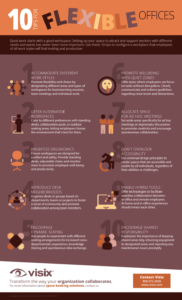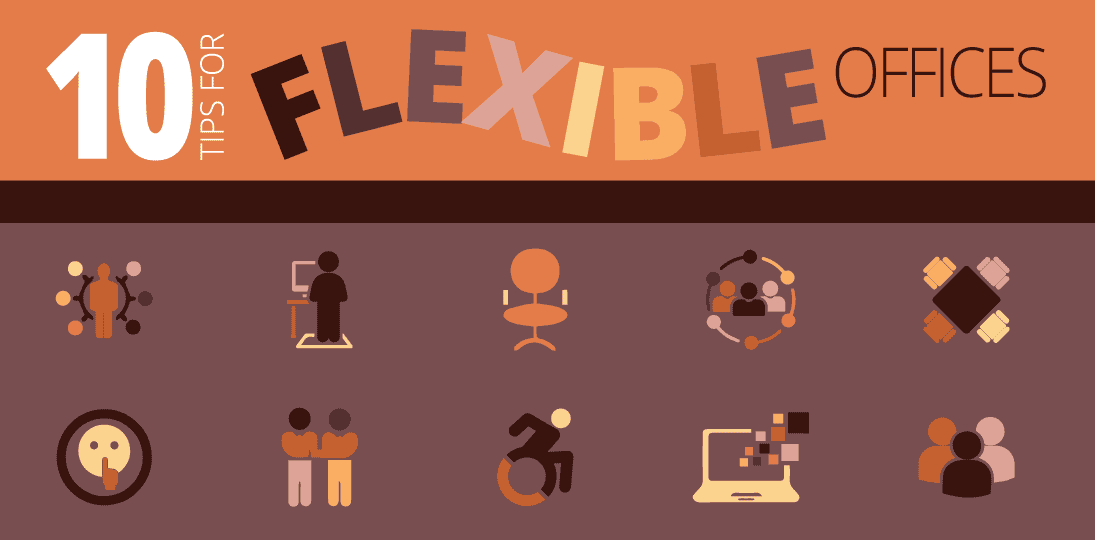Good work starts with a good workspace. As more and more organizations embrace hybrid models and flexible offices, setting up your space to attract and support workers with different needs and wants has never been more important. Use these 10 tips to configure a workplace that employees of all work styles will find inviting and productive:
- Accommodate Different Work Styles: Promote flexibility and choice by designating different areas and types of workspaces for brainstorming sessions, team meetings and individual work.
- Offer Alternative Workspaces: Cater to different preferences with standing desks, collaboration pods or outdoor seating areas, letting employees choose the environment that’s best for them.
- Prioritize Ergonomics: Ensure workspaces are designed for comfort and safety. Provide standing desks, adjustable chairs and monitor risers to promote employee well-being and productivity.
- Introduce Desk Neighborhoods: Organize desks in groups based on departments, teams or projects to foster a sense of community and promote collaboration among team members.
- Encourage Dynamic Seating: Ask people to experiment with different seating arrangements for increased cross-departmental cooperation, knowledge sharing and spontaneous idea exchange.
- Promote Wellbeing with Quiet Zones: Offer areas where employees can focus on tasks without disruptions. Clearly communicate and enforce guidelines regarding noise levels and distractions.
- Allocate Space for Ad Hoc Meetings: Set aside areas specifically for ad hoc meetings or impromptu discussions to promote creativity and encourage spontaneous collaboration.
- Don’t Overlook Accessibility: Use universal design principles to create spaces that are accessible and usable by all individuals, regardless of their abilities or challenges.
- Enable Hybrid Tools: Offer technologies to facilitate seamless collaboration between in-office and remote employees. At home and in-office experiences should mirror each other.
- Encourage Shared Responsibility: Emphasize the importance of keeping shared areas tidy, returning equipment to designated areas and reporting any maintenance issues promptly.
By optimizing the space in flexible offices, you can optimize efficiencies, increase productivity and improve employee engagement. Embracing technology, prioritizing employee wellbeing and encouraging open communication will help create a flexible and collaborative work environment for everyone.

